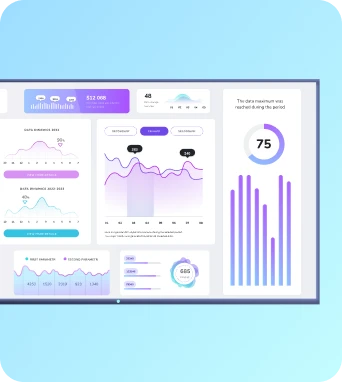Augmented reality product displays
Augmented reality product displays use AR overlays and interactive 3D models on digital signage and TV dashboards to present products in context. They allow viewers to examine scale, customise options, and access supplementary content in real time, helping retailers and internal communications teams improve engagement, reduce returns and support informed purchase decisions.
Augmented reality product displays
How AR product displays work in signage networks
Augmented reality product displays for digital signage rely on a few core components: the 3D content and metadata, a rendering engine or web-capable AR framework, and the display hardware or connected TV endpoints. Content creators export optimised 3D models and interaction scripts that can be hosted on a content server or embedded in web pages. On the signage player, a browser or native app runs the AR runtime to render models, apply lighting and play animations. For Fugo.ai, this typically means delivering AR-enabled web experiences via secure URLs embedded in channels and scheduled like any other asset, allowing network managers to maintain central control over what appears on each screen and when. Integration with sensors and input devices adds practical capabilities. Depth cameras, QR codes and NFC tags can anchor AR content to a physical location or product, while touch overlays or companion mobile apps let users rotate, scale and customise items. In retail, anchor points on a shop floor or product SKU can trigger the correct model with measurement overlays so a shopper sees furniture scaled to a space or clothing items shown on a virtual mannequin. For workplace dashboards, AR can be used to demonstrate assembly sequences, show exploded views of machinery or overlay safety information at a glance. Because the heavy lifting is done by lightweight web runtimes, updates to models, pricing or interactive flows can be rolled out centrally without visiting each display. Network administrators should consider bandwidth, player capabilities and fallback strategies. High-detail 3D assets need compression and progressive loading to keep start times acceptable, and signage players require modern browsers or native decoders for WebGL and WebXR support. When hardware limitations prevent full AR rendering on-screen, Fugo workflows support hybrid approaches: play a pre-rendered interactive video or offer a QR code that hands off the AR session to a customer’s smartphone. Logging and analytics are crucial; capture interactions, session lengths and conversion signals to understand how AR impacts engagement and to refine content and scheduling based on real-world performance.
Design, deployment and operational considerations
Designing effective AR product displays begins with content that is both accurate and performant. 3D models should be optimised for polygon count, texture size and efficient material use to ensure smooth playback on signage players. Lighting needs to be baked or approximated so models read well under the varied conditions of retail floors or office foyers. UX designers must anticipate quick interactions; screens in public spaces typically receive short attention spans, so provide clear affordances, concise product information and a fast path to deeper engagement such as a QR-triggered AR checkout or a “see more” link that opens on mobile. Accessibility matters too: offer captions, alternative text assets and non-visual fallbacks so content remains useful where AR is not viable. For deployment, centralised content management and scheduling are indispensable. Use your signage platform to assign AR displays to specific playlists, tag assets by location or campaign, and stage rollouts with testing channels. Hardware selection is equally important: choose players with current web engines, adequate GPU resources and secure boot options. Test in situ for ambient light, viewing distance and network stability; successful AR experiences in-store depend as much on environmental tuning as on content quality. Make sure teams have a clear process for updating models, swapping SKUs and patching interactive scripts to avoid stale or erroneous displays. Operationally, establish monitoring and maintenance routines. Track load times, error rates and interaction metrics from each endpoint, and set alerts for failures to render or degraded performance. Train retail floor staff and internal comms managers to troubleshoot basic issues and to explain AR features to users. For privacy and compliance, review any data capture tied to AR interactions—especially if handoffs to mobile apps or sign-in flows are involved—and disclose this clearly where required. When planned and maintained correctly, AR product displays can become a repeatable channel for product education, experiential marketing and measurable uplift in customer engagement.
Implementation tips for Fugo.ai users
Keep the learning going...
Audit trail
A chronological, tamper-evident record of actions and events that shows who performed what, when, and where, used for accountability, compliance, and investigation.
Augmented Reality (AR) integration
Augmented Reality (AR) integration refers to embedding virtual content into physical environments and camera feeds and connecting those overlays to a digital signage system. In a Fugo.ai context it enables contextual graphics, data visualisations and interactive wayfinding to appear on TV dashboards, mobile devices and location-based screens for richer, real-time communications.
Auto-brightness adjustment
Auto-brightness adjustment automatically varies a display's luminance in response to ambient light measurements, schedules and policy rules. In digital signage deployments it preserves legibility, reduces energy use and extends screen lifetime by dimming or brightening devices to suit viewing conditions while remaining compatible with content priorities and device management systems.



